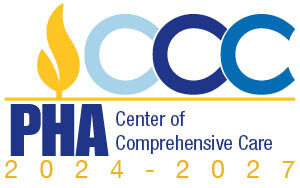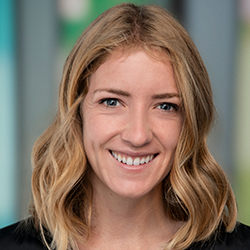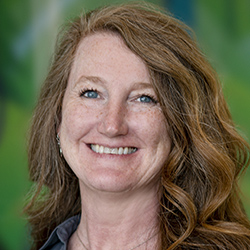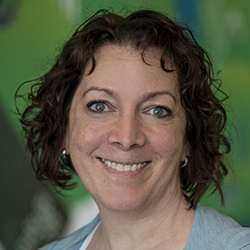Pulmonary Hypertension
What is pulmonary hypertension?
Pulmonary hypertension (pronounced PULL-mun-airy hi-per-TEN-shun) is high blood pressure in the lungs. It happens when blood vessels in the lungs cannot expand enough to receive blood coming from the heart.
There is no cure. But treatment can help with some of the symptoms and slow the progress of the disease. Children tend to do better if they get treatment as soon as possible.
-
How does blood normally move to and from the lungs?
Normally, the right ventricle of the heart pumps oxygen-poor (blue) blood to the lungs to pick up oxygen. This blood leaves the heart through the pulmonary artery.
The pulmonary artery branches out and becomes smaller blood vessels in the lungs. The smallest blood vessels in the lungs are called the capillaries. The capillaries have thin walls and run near the small air chambers of the lungs.
The blood absorbs oxygen in the capillaries. Then, the oxygen-rich (red) blood flows into larger vessels to return to the heart. This blood flows into the heart’s left side, where the left ventricle pumps it to the rest of the body.
The pulmonary arteries and lung capillaries have muscle in their walls. This muscle relaxes to allow in more blood or squeezes to allow in less blood based on the body’s needs.
-
What is different in pulmonary hypertension?
In children with pulmonary hypertension, the muscle in the walls of the pulmonary arteries and lung capillaries is thickened. These blood vessels cannot expand easily. When the child’s right ventricle pumps blood toward their lungs, the vessel walls resist more than normal.
The main effect of pulmonary hypertension is that the right ventricle has to work harder to pump blood to the lungs. Because this ventricle is working harder, it gets bigger and thicker, which may lead to heart failure.
-
What causes pulmonary hypertension?
Pulmonary hypertension can have many causes or related diseases.
In children, a common cause is congenital heart disease. Some heart defects can cause pulmonary hypertension because they direct more blood than normal to the pulmonary arteries. This is a reason it can be important to repair heart defects, when possible, before the heart or blood vessels are damaged permanently. Often, pulmonary hypertension improves after doctors repair the heart defect.
Another common cause of pulmonary hypertension in children is lung disease. Lung disease may happen because a baby was born early (prematurely) or they have a congenital lung problem. Children can also get lung disease after being on a machine to help them breathe (mechanical ventilator) for a long time.
Sometimes, children with obstructive sleep apnea get pulmonary hypertension.
Other illnesses that can cause pulmonary hypertension include sickle cell disease, lupus and scleroderma.
Rarely, pulmonary hypertension happens for no clear reason. Then doctors call it idiopathic. In some cases, there is a family history of the condition.
Heart Center at Seattle Children's
Symptoms of Pulmonary Hypertension
Breathing problems are the most common symptom in children with pulmonary hypertension.
Other symptoms may include:
- Feeling short of breath when active
- Fainting or feeling weak or dizzy when active
- Being more tired than normal
- Chest pain
- Blue- or purple-tinged skin, lips or fingernails (cyanosis) or skin that looks mottled, grayish or paler than your child’s usual skin color
- Swelling in the ankles
If your child has symptoms, they may get worse with exercise or activity.
Diagnosing Pulmonary Hypertension
To diagnose this condition, your child’s provider will examine your child and use a stethoscope to listen to their heart. The provider will ask for details about your child’s symptoms, their health history and your family health history.
Your child will also need an echocardiogram and an electrocardiogram.
To get more information about how their heart and lungs look and work, your child may need some or all of these tests:
- Lab tests to tell how your child’s heart and other organs are working
- Lung function tests to see how well your child can breathe
- Imaging studies to see your child’s lungs and heart, such as a chest X-ray, CT (computed tomography) scan, angiography, nuclear medicine lung scan, or cardiac MRI (magnetic resonance imaging) scan
- Exercise testing
- Cardiac catheterization
- Sleep studies to see if your child has obstructive sleep apnea
We may also ask your child to do a 6-minute walk test. For this test, we ask your child to walk as far as they can in 6 minutes and then tell us how tired they feel and how well they can breathe. We also check the level of oxygen in their blood. A walk test can be used to check your child’s condition over time to see if it is getting worse.
Treating Pulmonary Hypertension
Without treatment, pulmonary hypertension gets worse and can lead to heart failure. Proper treatment can slow the progress of the disease and help relieve your child’s symptoms. The sooner children get treatment, the better they tend to do.
Care for pulmonary hypertension can be complex. Our Pulmonary Hypertension Clinic nurse coordinates the many services your child may need.
Treatment options include:
-
Oxygen therapy
This means breathing air that has more oxygen than normal through tubes that go into your child’s nose or through a mask that goes over their nose and mouth. This treatment helps open up the blood vessels in their lungs.
-
Medicines
Some children need medicines to relax the muscle in the blood vessels in their lungs or to help their heart pump better. It depends on how serious their condition is. Some children need to take medicine by mouth. Some need to take inhaled medicines. Others need constant medicine through a tube inserted into their vein. This is called infusion therapy, and it uses a pump to give the medicine.
-
Surgery
Children who have pulmonary hypertension due to a congenital heart defect may need surgery to repair the defect. This often improves the pulmonary hypertension.
One option for some children is a Potts shunt. Surgeons can implant this tube to direct excess blood from the pulmonary artery to the aorta. The Seattle Children’s team has used this method multiple times to take pressure off a child’s pulmonary artery.
-
New treatments
Many new treatments are being developed to help treat pulmonary hypertension, including new oral (by mouth) and inhaled therapies. These developments are exciting, but they also need to be used carefully. The medicines can cause harm if used incorrectly. Some are helpful only for certain groups of patients. Children who receive the newer medicines need to be started on them slowly at the hospital. Families need teaching and support to learn how to give the medicines when their child returns home.
Our Pulmonary Hypertension Clinic team has the expertise to provide the newest and most advanced treatments for your child, as well as education and support for your family.
Pulmonary Hypertension at Seattle Children’s

Seattle Children’s has a special Pulmonary Hypertension Clinic to care just for children with high blood pressure in their lungs. Since 2016, we have been accredited as a pediatric Center of Comprehensive Care by the Pulmonary Hypertension Association (PHA).
Seattle Children’s received this recognition for consistently providing high quality cardiac care with a robust and dedicated team. This designation is given to Pulmonary Hypertension (PH) programs with experience to best manage PH, to improve overall quality of care, and ultimately improve outcomes of children with PH.
-
The experts you need are here
- The Heart Center team includes 3 providers with special expertise in pulmonary hypertension — a cardiologist, a cardiac intensivist and an advanced practice provider (APP). We have diagnosed and treated many children with pulmonary hypertension and the conditions that may cause it.
- Our Pulmonary Hypertension Clinic is the only such clinic for children in Washington, Alaska, Montana and Idaho. Doctors around the Northwest refer children and families to us.
- Experienced doctors, APPs and nurses on our team provide comprehensive evaluation and care. We offer the full range of treatment options, like oxygen therapy, medicine and surgery to correct a heart defect.
- We work closely with special pharmacists to ensure you can get the medicines your child needs for pulmonary hypertension. Often, local pharmacies or drugstores do not carry these medicines.
- We also have a pediatric cardiac anesthesia team and a Cardiac Intensive Care Unit ready to care for children who have heart surgery.
- Your child’s team includes other experts from Seattle Children’s based on their needs. For example, your child may see doctors who specialize in newborns (neonatologists), lung health (pulmonologists), bronchopulmonary dysplasia or congenital diaphragmatic hernia.
- Our close link with the Pulmonary Hypertension Association (PHA) is important, too. PHA is a group that offers support and facts to patients and families and works to find a cure.
-
Care from birth through young adulthood
- Seattle Children’s doctors and advanced practice providers see babies, children and teens with pulmonary hypertension. We have experience diagnosing and treating this condition in kids of all ages.
- Your child’s treatment plan is custom-made. Providers from the Pulmonary Hypertension Clinic will review your child’s symptoms, health history and test results to create a plan of care just for your child. We closely check your child’s needs to make sure they get the care that is right for them as they grow.
- Our goal is to find the cause of your child’s problem and treat any related conditions. We focus on reducing your child’s symptoms and helping their heart work better. We also work to improve factors that might affect your child’s health, such as low oxygen during sleep.
- When your child gets older, they will need care from doctors who treat adults. To help your child make this move, we partner with doctors at UW Medicine. They have clinics for adults with pulmonary hypertension and related heart or lung problems.
- If your child was born with a heart defect, we have a special Adult Congenital Heart Disease Program to meet their long-term healthcare needs. This program, shared with the University of Washington, transitions your child to adult care when they are ready.
-
Support for your whole family
- We are committed to your child’s overall health and well-being and to helping your child live a full and active life.
- Whatever types of care your child needs, we will help your family through this experience. We will discuss your child’s condition and treatment options in ways you understand and involve you in every decision.
- Our Child Life specialists know how to help children understand their illnesses and treatments in ways that make sense for their age.
- Seattle Children’s has many resources, from financial to spiritual, to support your child and your family and make the journey as smooth as possible.
- Many children and families travel to Seattle Children’s for care. We help you coordinate travel and housing so you can stay focused on your child.
- Read more about the supportive care we offer.
-
Research to improve care
- Seattle Children’s works to improve care for children with pulmonary hypertension and to research new treatments.
- We take an active role in studies to see if new medicines can achieve better outcomes or if medicines used in adults can be adapted to work in kids so that families have more treatment options.
- Disease registries are lists of patients with details about their health. Our team uses registries — and invites families to enroll — to increase knowledge about pulmonary hypertension and benefit children everywhere with this condition.
Who’s on the team?
A pediatric cardiologist, cardiac intensivist or nurse practitioner from our Heart Center will see your child in the Pulmonary Hypertension Clinic. These providers work closely with rest of our Heart Center team, which includes cardiac anesthesiologists, cardiac surgeons and nurses who specialize in heart care.
Based on your child’s needs, members of their pulmonary hypertension team also work closely with Seattle Children’s teams who specialize in bronchopulmonary dysplasia, pulmonary medicine, congenital diaphragmatic hernia, cardiac catheterization, nutrition, social work, feeding therapy, palliative care and other areas.
Teams
Research and Clinical Trials
Seattle Children’s is one of the few pediatric centers in the country that take part in research studies of new medicines for pulmonary hypertension — or new versions meant for children (pediatric formulations). This means your child may be able to get medicines here that aren’t offered at other hospitals or clinics.
Pulmonary hypertension is a rare disease. So, to learn more about it, we try to enroll our patients in disease registries. By collecting details in one place, doctors can find out more about pulmonary hypertension and which treatments help the most.
Contact Us
Contact the Heart Center at 206-987-2515 for an appointment at the Pulmonary Hypertension Clinic, a second opinion or more information.
Providers, see how to refer a patient.
Telemedicine at Seattle Children’s
You may be offered a telehealth (virtual) appointment. Learn more.
Paying for Care
Learn about paying for care at Seattle Children’s, including insurance coverage, billing and financial assistance.








